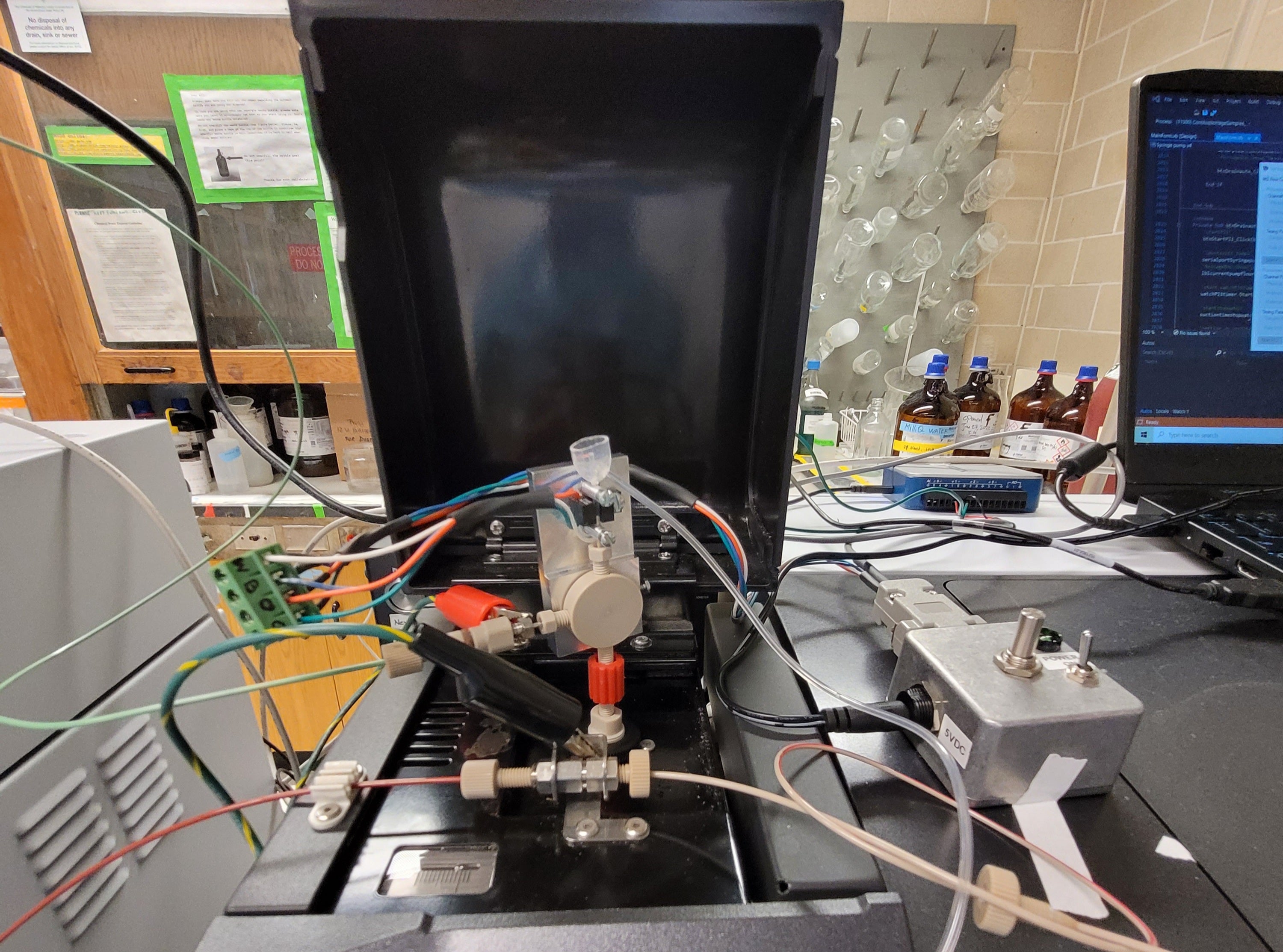
New technique can quickly detect fentanyl and other opioids
Testing method can analyze blood samples twice as quickly as other techniques

Testing method can analyze blood samples twice as quickly as other techniques
By Media RelationsUniversity of Waterloo researchers have developed a new blood testing method that can detect potent opioids much faster than traditional approaches and potentially save lives.
The method, the latest effort by Waterloo researchers and entrepreneurs to lead health innovation in Canada, can simultaneously analyze 96 blood samples that could contain opioids such as fentanyl in under three minutes – twice as quickly as other techniques.

Microfluidic open interface system
"The difference between our blood testing method and traditional methods used in laboratories and hospitals is that we can do it faster and reach the same conclusion," said Emir Nazdrajić, a postdoctoral fellow in Waterloo's Department of Chemistry and co-author of a study that details the new technique.
"Let's say someone who has overdosed is in the emergency room, and doctors need to quickly determine what they've taken to treat them effectively. The speed of our method can be lifesaving."
In 2022, over 70,000 Americans died of overdoses from fentanyl, an opioid that is 50 times more powerful than heroin. About 7,000 people die from fentanyl annually in Canada, nearly one-third of which occurs in British Columbia, which is among the worst rates per capita in North America.
When using the Waterloo-designed method, the researchers place a small amount of blood in a 96-well plate with a phosphate buffer. The well plate is then put in a machine that agitates the samples, and a solid phase microextraction (SPME) probe is introduced to enhance the drugs of interest. The sample is then analyzed by a mass spectrometer coupled to a microfluidic open interface, with results available in about 90 seconds.
"There is a high demand for rapid screening methods using mass spectrometry (MS) that can decrease the turnaround time, cost, and limits of quantitation of existing methodologies," said Dr. Janusz Pawliszyn, corresponding author of the study and a professor in Waterloo's Department of Chemistry. "Our method targets not only fentanyl but other drugs and certain types of diseases."
A study detailing the new blood testing method, co-author by Nazdrajić, Pawliszyn and Daniel Ricket, a PhD candidate in Waterloo's Department of Chemistry, was recently published in the journal Analytical Chemistry.

Read more
Here are the people and events behind some of this year’s most compelling Waterloo stories

Read more
The InnoHK Centre for Eye and Vision Research aims to bring eye and vision research to market through Waterloo-Hong Kong partnership

Read more
15 University of Waterloo researchers have been named to the annual Highly Cited Researchers™ list for significant contributions to their specific fields of research
The University of Waterloo acknowledges that much of our work takes place on the traditional territory of the Neutral, Anishinaabeg, and Haudenosaunee peoples. Our main campus is situated on the Haldimand Tract, the land granted to the Six Nations that includes six miles on each side of the Grand River. Our active work toward reconciliation takes place across our campuses through research, learning, teaching, and community building, and is co-ordinated within the Office of Indigenous Relations.